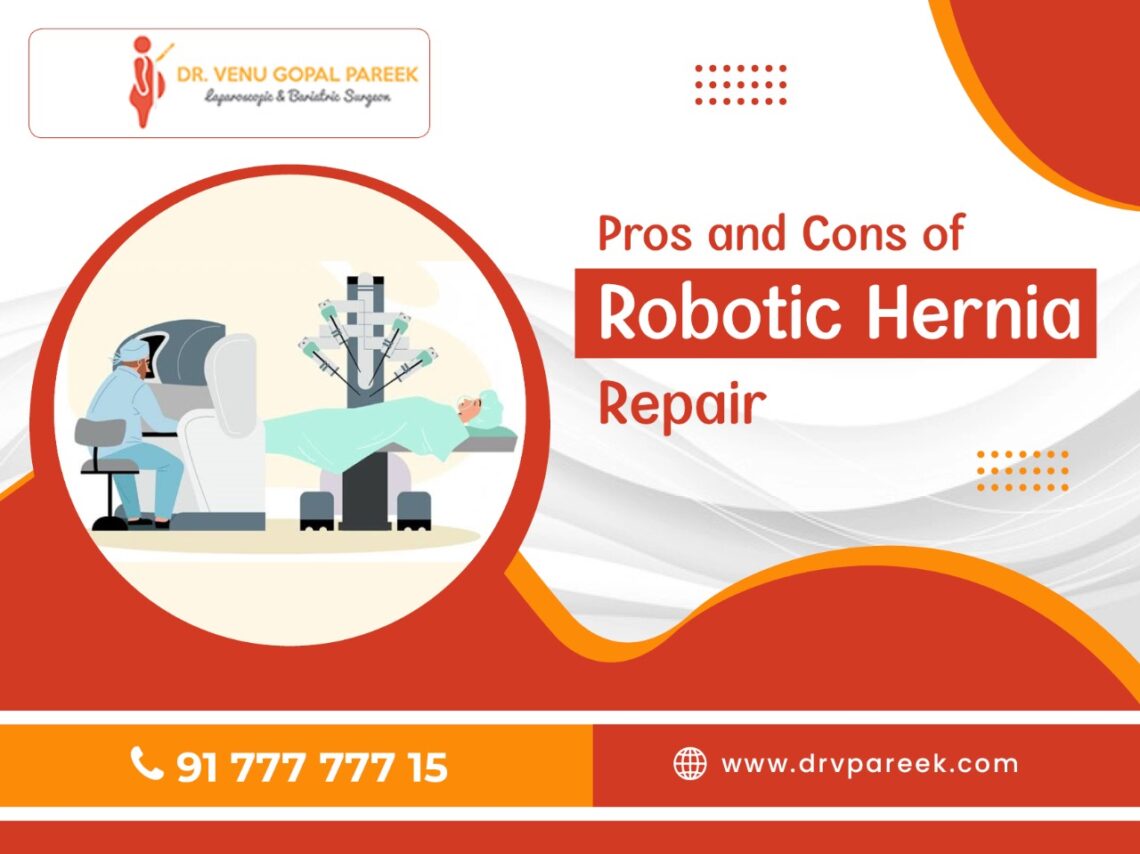
A hernia is one of the most common health complaints, and surgical repair of the different types of hernias (All hernias might not require surgery) is fairly common. Traditional open surgery is the standard procedure, but it has been overcome by advanced laparoscopic and a minimally invasive technique in which small incisions are made to perform the surgery. In recent years, technology has advanced even more in surgical techniques. The approach to surgery has changed; nowadays, some minimally invasive surgeries are being done through robots, including hernia repair.
In the case of a hernia diagnosis, your doctor most likely told you that it does not resolve on its own and usually needs to be surgically repaired. A hernia repair is among the common general surgeries, according to some studies.
Understanding hernias
The internal body organs that protrude out of the weak muscular wall (responsible for holding the organs in place) lead to the development of a bulge called a hernia. Hernias are divided into different types based on the area they occur:
- Inguinal Hernias: develop in the groin area
- Incisional Hernias: develop around the surgical scar
- Umbilical Hernias: develop on the belly button
- Hiatal Hernias: develops in the upper part of the stomach
Men, women, and children, anyone can get hernias, but the risk factors differ depending on the type of hernia. For example, patients who have had surgery are at risk for incisional hernias, whereas obese people are at risk for Hiatal hernias.
Understanding Robotic Hernia repairs
Robotic hernia repair surgery is a new and innovative minimally invasive technique that is quite similar to laparoscopic surgery. Like in laparoscopic hernia repair surgery, robotic surgery also involves making small incisions and uses a tiny camera to project the inside view of the abdomen onto a monitor. Know more about laparoscopic hernia repair
But in robotic surgery, the surgeon will sit next to you at a console and operate the robot with robotic arms that perform your surgery. The camera provides an HD 3D view of the surgical area on a monitor. In real-time, every movement of the robotic system is controlled by the surgeon, ensuring the instruments bend and rotate precisely.
Pros of Robotic Hernia repairs
The skills of a surgeon are enhanced with robot-assisted surgery, thanks to specialized technology. By making small incisions, doctors can reach harder areas that can’t be reached by other means. In addition to enabling precise movements, the specialized technology also enhances magnification.
High-definition 3D imaging
The cutting-edge surgical equipment has a 3D view and extremely high zoom to enlarge the operative area.
Precision
The surgeon controls the movements of robotic arms that hold small surgical tools and instruments and guides them in precise paths.
Smaller scars
The robotic arms and surgical instruments used are small, so the surgeon needs to make a few smaller incisions to perform the surgery. After the incisions are healed, it results in smaller scars.
Less recovery time
The recovery time following a robotic hernia surgery is exceptionally quick compared to traditional open surgery. Almost all the patients experience less pain and faster healing.
Shorter hospital stays
Most of the patients are discharged on the day of the surgery or the next day because it is a minimally invasive surgery. You can go home after the anaesthesia wears off and your vitals are stabilized.
Cons of Robotic Hernia Repair
Any technology comes with some cons, and robotic hernia repair also has a few disadvantages; they include:
- The robotic equipment is costly, so they are available only in a few hospitals for those who can afford them. And every surgeon can’t handle the procedure; they need to have specially trained surgeons.
- The surgeon should be able to convert this invasive procedure to an open procedure if there are complications like scar tissue that make surgery challenging for robotic technology.
- There is a possibility of nerve damage and compression.
- Robotic system malfunction — like the failure of the arms functioning, lens, camera etc. However, it is extremely rare.
Dr. Venugopal Pareek and his team at Care Hospitals offer a wide range of surgical procedures for hernia repair, including innovative robotic surgery. If you are having any hernia problems, know the benefits of robotic hernia surgery over other procedures. But first, consult the surgeon to evaluate your problems and find out whether the robotic surgery suits you.







